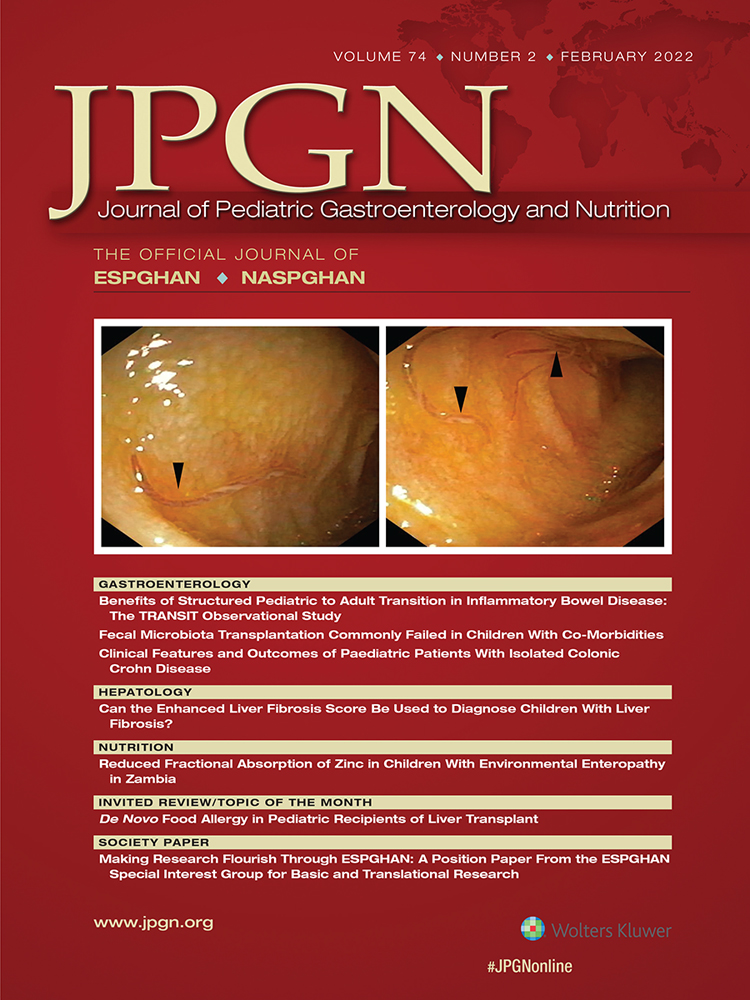Invited Commentary
Are We Making Progress in the Hunt for Biomarkers that Could Differentiate Proton Pump Inhibitor-Responsive Eosinophilic Esophagitis?
Wael N. Sayej,
Corresponding Author
Wael N. Sayej
Baystate Children's Hospital, Baystate Children's Specialty Group, University of Massachusetts Medical School – Baystate, Springfield, MA
Address correspondence and reprint requests to Wael N. Sayej, MD, Baystate Children's Hospital, Baystate Children's Specialty Group, University of Massachusetts Medical School – Baystate, Springfield, MA (e-mail:
[email protected]).
Search for more papers by this author
Wael N. Sayej,
Corresponding Author
Wael N. Sayej
Baystate Children's Hospital, Baystate Children's Specialty Group, University of Massachusetts Medical School – Baystate, Springfield, MA
Address correspondence and reprint requests to Wael N. Sayej, MD, Baystate Children's Hospital, Baystate Children's Specialty Group, University of Massachusetts Medical School – Baystate, Springfield, MA (e-mail:
[email protected]).
Search for more papers by this author
First published: 28 October 2021
No abstract is available for this article.
REFERENCES
- 1.Furuta GT, Liacouras CA, Collins MH, et al. Eosinophilic esophagitis in children and adults: a systematic review and consensus recommendations for diagnosis and treatment. Gastroenterology 2007; 133: 1342–1363.
- 2.Furuta GT. Eosinophilic esophagitis: update on clinicopathological manifestations and pathophysiology. Curr Opin Gastroenterol 2011; 27: 383–388.
- 3.Dellon ES, Liacouras CA, Molina-Infante J, et al. Updated international consensus diagnostic criteria for eosinophilic esophagitis: proceedings of the AGREE conference. Gastroenterology 2018; 155: 1022.e10–1033.e10.
- 4.Furuta GT, Kagalwalla AF, Lee JJ, et al. The oesophageal string test: a novel, minimally invasive method measures mucosal inflammation in eosinophilic oesophagitis. Gut 2013; 62: 1395–1405.
- 5.Dellon ES, Woosley JT, McGee SJ, et al. Utility of major basic protein, eotaxin-3, and mast cell tryptase staining for prediction of response to topical steroid treatment in eosinophilic esophagitis: analysis of a randomized, double-blind, double dummy clinical trial. Dis Esophagus 2020; 33: 6.
- 6.Sarbinowska J, Wiatrak B, Wasko-Czopnik D. Searching for noninvasive predictors of the diagnosis and monitoring of eosinophilic esophagitis--the importance of biomarkers of the inflammatory reaction involving eosinophils. Biomolecules 2021; 11: 6.
- 7.Irastorza LE, Hopson P, Nabar S, et al. Eosinophil-derived neurotoxin predicts response to proton-pump inhibitor treatment in pediatric eosinophilic esophagitis. J Pediatr Gastroenterol Nutr 2022; 74: 267–271.
- 8.Sayej WN, Patel R, Baker RD, et al. Treatment with high-dose proton pump inhibitors helps distinguish eosinophilic esophagitis from noneosinophilic esophagitis. J Pediatr Gastroenterol Nutr 2009; 49: 393–399.
- 9.Dranove JE, Horn DS, Davis MA, et al. Predictors of response to proton pump inhibitor therapy among children with significant esophageal eosinophilia. J Pediatr 2009; 154: 96–100.
- 10.Iglesia EGA, Reed CC, Nicolai EA, et al. Dietary elimination therapy is effective in most adults with eosinophilic esophagitis responsive to proton pump inhibitors. Clin Gastroenterol Hepatol 2020; 18: 1638.e2–1640.e2.
- 11.Dellon ES, Speck O, Woodward K, et al. Markers of eosinophilic inflammation for diagnosis of eosinophilic esophagitis and proton pump inhibitor-responsive esophageal eosinophilia: a prospective study. Clin Gastroenterol Hepatol 2014; 12: 2015–2022.




